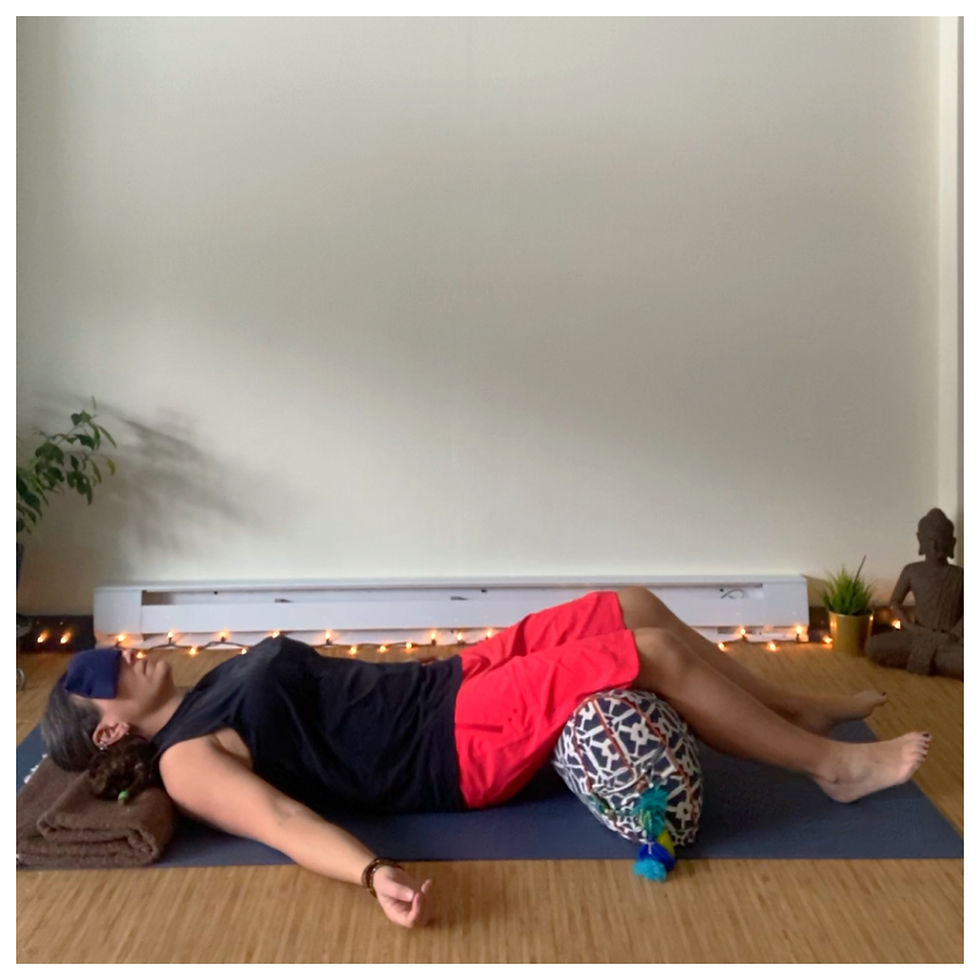Reshaping Yoga for Every Body
- Joy Zazzera

- Oct 26, 2020
- 4 min read
This article appeared in the September 2020 edition of Happenings Magazine, the premier showcase for the best in Northeastern Pennsylvania
National yoga month is the perfect time to shed the illusion that you are not shaped for the lifelong health benefits of mindful movement.

Yoga is an essential tool for personal transformation from the inside-out. But it is the outside-in illusion of this ideal that prevents so many people from experiencing yoga’s lifelong benefits.
Society has conditioned us to believe there is a “correct way” to do just about anything, including adhering to strict alignment principles while practicing yoga. While yoga can be a vehicle to transform our perception of flexibility, strength, body image and pain tolerance, much of our dissatisfaction with our body’s appearance, abilities and our compromised self-esteem is a result of an image not rooted in reality but grounded in illusion.
Every body is a yoga body, no matter the shape, regardless of physical limitations. Frustration surfaces when we attempt to follow old alignment cues, by manipulating a modern body into aesthetically pleasing poses designed for some one else. Anatomically variability exists among all of us. As a yoga teacher, I aim to make yoga accessible by offering variations for each movement from simple to spicy. These variations, commonly called “modifications,” are not handicaps but rather empowered expressions of a palpable connection to mind and body.
You don’t have to “go further” in a posture to do it “correctly” - everyone benefits from doing a wide range of movements. All of us need to strengthen beyond the range required to hold any particular shape. We don’t always bend over to pick something up in the same way so we shouldn’t be practicing yoga only one way. Expanding our movement portfolio helps our weaker areas adapt and strengthen. According to Jules Mitchell, yoga educator and expert on biomechanics (the study of how our tissues adapt to loading), “Alignment is not absolute, but rather about having many movement options for the task at hand, on the yoga mat and in our everyday lives.”
In order to move our body well, our nervous system must sense our body well. We tend to under appreciate our ability to send our nervous system new sensory inputs because of social conditioning for “correctness”. No matter your body type or abilities, your body was designed for varied movement, including the ways it has not moved in a long time, likely due to perceived pain and discomfort.
But did you know that often, pain and discomfort are influenced by biological, psychological and social factors like beliefs about your body, past experiences, stress, tolerance for pain, old injuries and habitual movement avoidance? Prior to undergoing my first of two total knee replacements, I ticked all of these boxes - translating in an unbearable rehabilitation experience - including a manual manipulation under anesthesia 5 weeks post-op. Strongly desiring different results, I repurposed my yoga practice and transformed my physical and mental capacity as I breezed through my second replacement 19 months later. The better map your nervous system has for your body, the less likely it is to create persistent aches and pains and the more likely it will want to move.
A mindful and intentional approach to yoga can strengthen the neuromuscular connections between our nervous system (which controls our muscles) and the musculoskeletal system. We think we know better than our nervous system does, but it already knows how to coordinate the body to move and stabilize. Often, in the context of fitness-based yoga, there is a tendency to override this by trying to manipulate the body according to older alignment cues regarding posture, cuing excessive engagement of the major mover muscles like the quads, glutes and abdominals, and by moving too fast for the sake of “getting more work done”. Exploring movements that challenge the more subtle stabilizing muscles and tissues is what will actually help to remap the nervous system and change our association to pain and discomfort.

One’s perception of flexibility and strength is a real barrier for many people wanting to experience the internal nature of yoga’s lifelong benefits. One of my teachers, Jenni Tarma, expert yoga teacher at the Carolina Yoga Company in Durham, N.C., and an applied yoga anatomy specialist offers, “If we are only ever pulling things apart by searching for flexibility, nothing in the body will improve. Tightness in the body is the nervous system’s response to providing us stability when stability isn’t actually there.” She adds, “Stretching doesn’t lengthen muscles, strengthening doesn’t shorten them and discomfort in the body is a result of unfamiliarity. Yoga can teach you to be more present in your body without trying to classify everything as correct or incorrect or painful.” This is especially true for athletes who need sport-specific range of motion, not excessive flexibility - where yoga is an ideal tool for injury prevention and as recovery from the stress of over-training.
A yoga teacher with practical knowledge of anatomy, movement and the nervous system can help people of all body types shift their perceptions in order to experience all the ways their body was designed to move. This informed perspective will help you do everything in your life with a heighten level of physical awareness, mental acuity and confidence, all of which speak to the goals of yoga, undefined by the shapes we see other body’s making.
Joy Zazzera, instructor and owner of Yoga with Joy in Mayfield, PA, helps athletes and adults connect the physical and emotional aspects of asana practice, helping unique bodies build strength through purposeful movement and powerful thinking through group and private classes, both in studio and online.







Comments